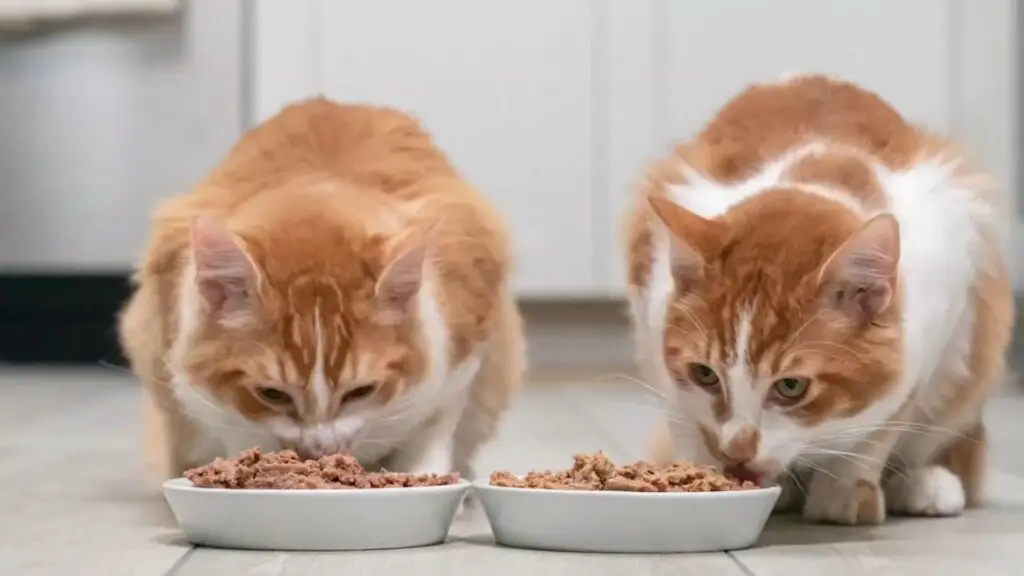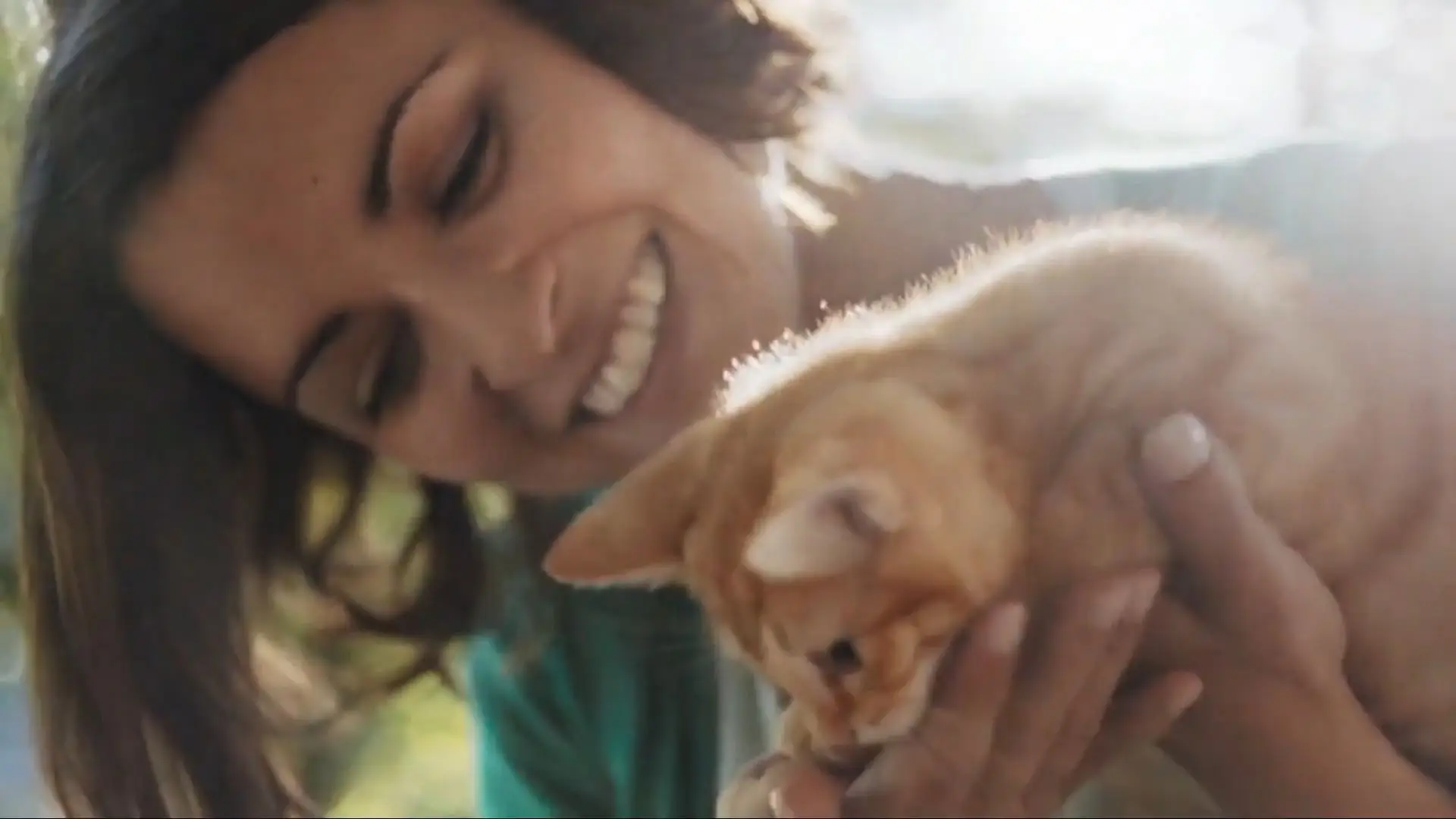When Luna started refusing her usual meals and dropped from 12 to 9 pounds in two months, her owner faced a critical decision. High-calorie cat food became the lifeline that transformed Luna from a lethargic, underweight feline back to her playful, healthy self. If your cat is struggling with weight loss due to illness, age, or genetic factors, understanding calorie-dense nutrition could be the key to their recovery.
High-calorie cat food represents specialized nutrition designed to maximize energy intake while supporting overall health. Unlike regular cat food, these formulations concentrate essential nutrients and calories into smaller serving sizes, making them ideal for cats who struggle to consume adequate nutrition through standard diets. This targeted approach addresses the unique metabolic needs of underweight cats while preventing the digestive stress that often accompanies large meal portions.
Understanding High-Calorie Cat Food: The Science Behind Weight Gain
What Makes Cat Food High-Calorie?
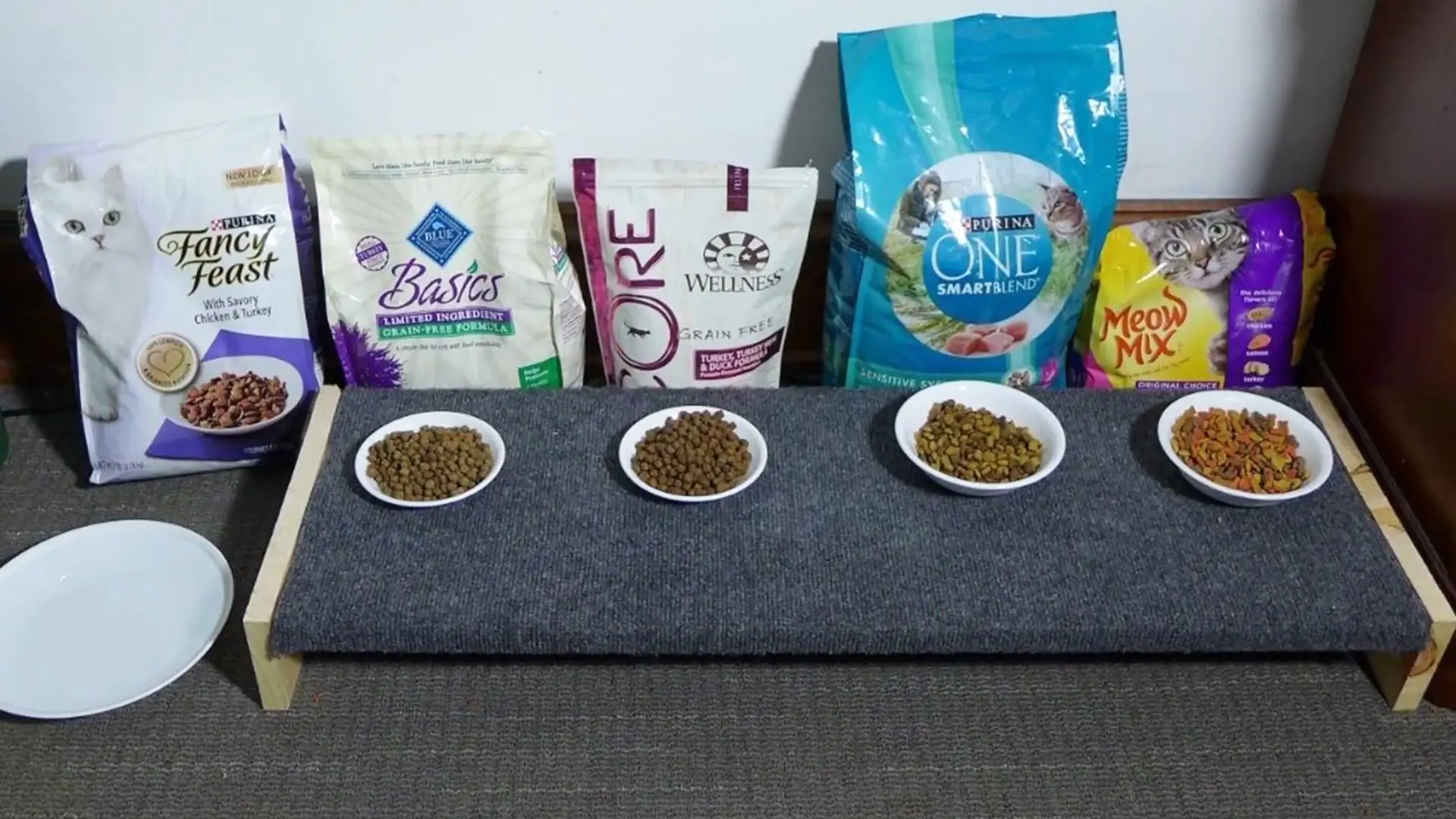
High-calorie cat food differs fundamentally from standard formulations through increased fat content, concentrated proteins, and enhanced nutrient density. While regular cat food typically contains 300-400 calories per cup for dry food or 70-100 calories per 3-ounce can for wet food, high-calorie options can provide 450-550 calories per cup or 120-180 calories per can.
The caloric boost comes primarily from animal fats and high-quality proteins rather than carbohydrates. Cats, as obligate carnivores, metabolize animal-based calories more efficiently than plant-based alternatives. Premium high-calorie formulations often include salmon oil, chicken fat, and concentrated meat proteins that provide sustained energy while supporting muscle development.
Metabolic Requirements for Weight Gain
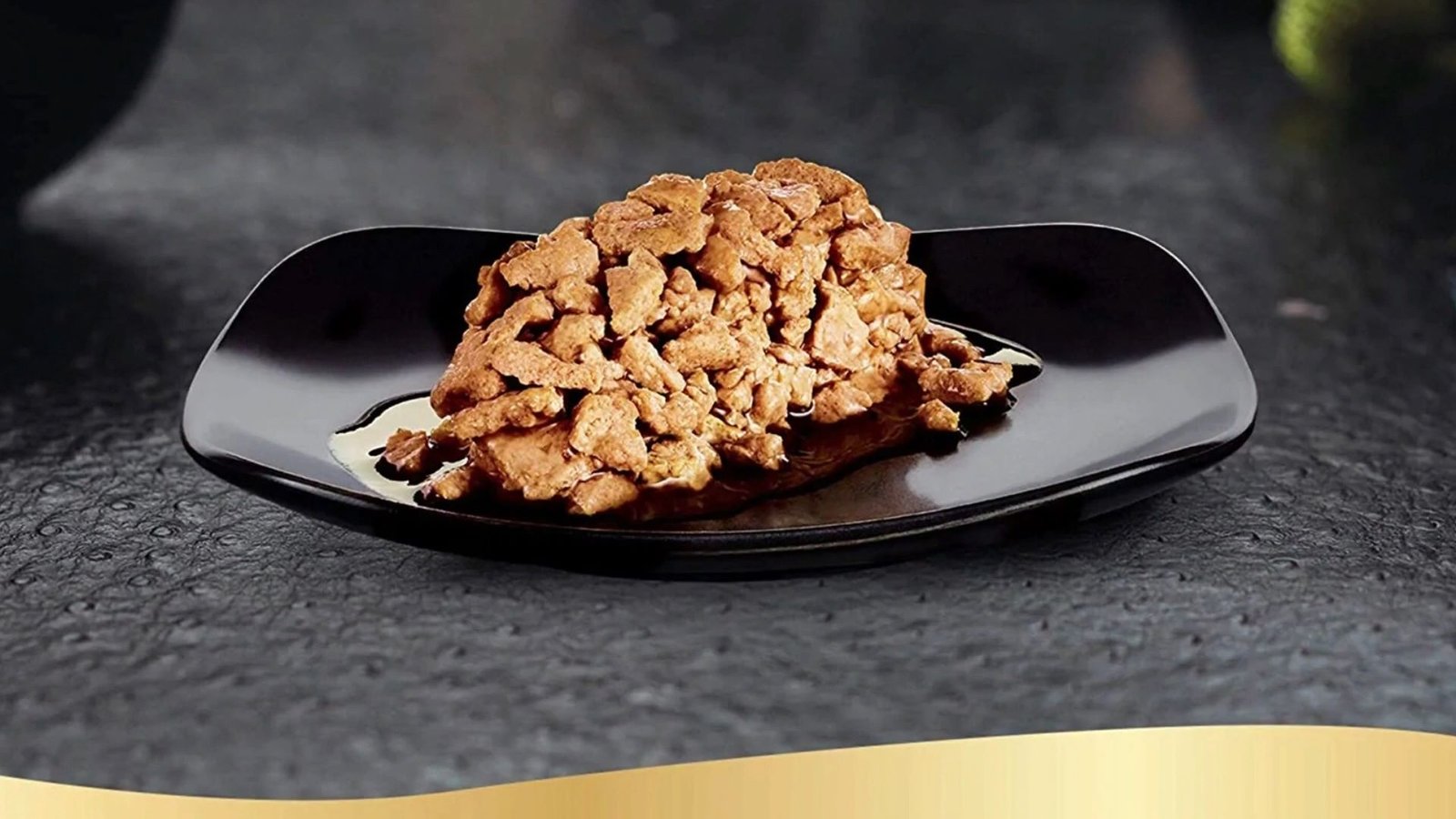
Healthy adult cats require approximately 20 calories per pound of body weight for maintenance. However, underweight cats typically need 30-35 calories per pound to achieve steady weight gain of 1-2 ounces weekly. This increased caloric requirement makes high-density nutrition essential rather than simply feeding larger portions of regular food.
The digestive advantages of calorie-dense food become apparent when considering stomach capacity. A cat’s stomach can comfortably hold 1-2 ounces of food per feeding. Standard cat food might require 4-5 ounces daily to meet weight gain needs, while high-calorie alternatives can deliver equivalent nutrition in 2-3 ounces.
Medical Conditions That Require High-Calorie Nutrition
Hyperthyroidism and Metabolic Disorders
Cats with hyperthyroidism experience accelerated metabolism that burns calories faster than normal consumption can replace them. These cats often eat voraciously yet continue losing weight, making calorie-dense nutrition critical for preventing dangerous weight loss during treatment.
Diabetic cats undergoing insulin regulation frequently experience appetite fluctuations and weight loss. High-calorie cat food formulated for diabetic management provides consistent energy while supporting blood sugar stability through controlled carbohydrate content.
Recovery and Convalescent Feeding
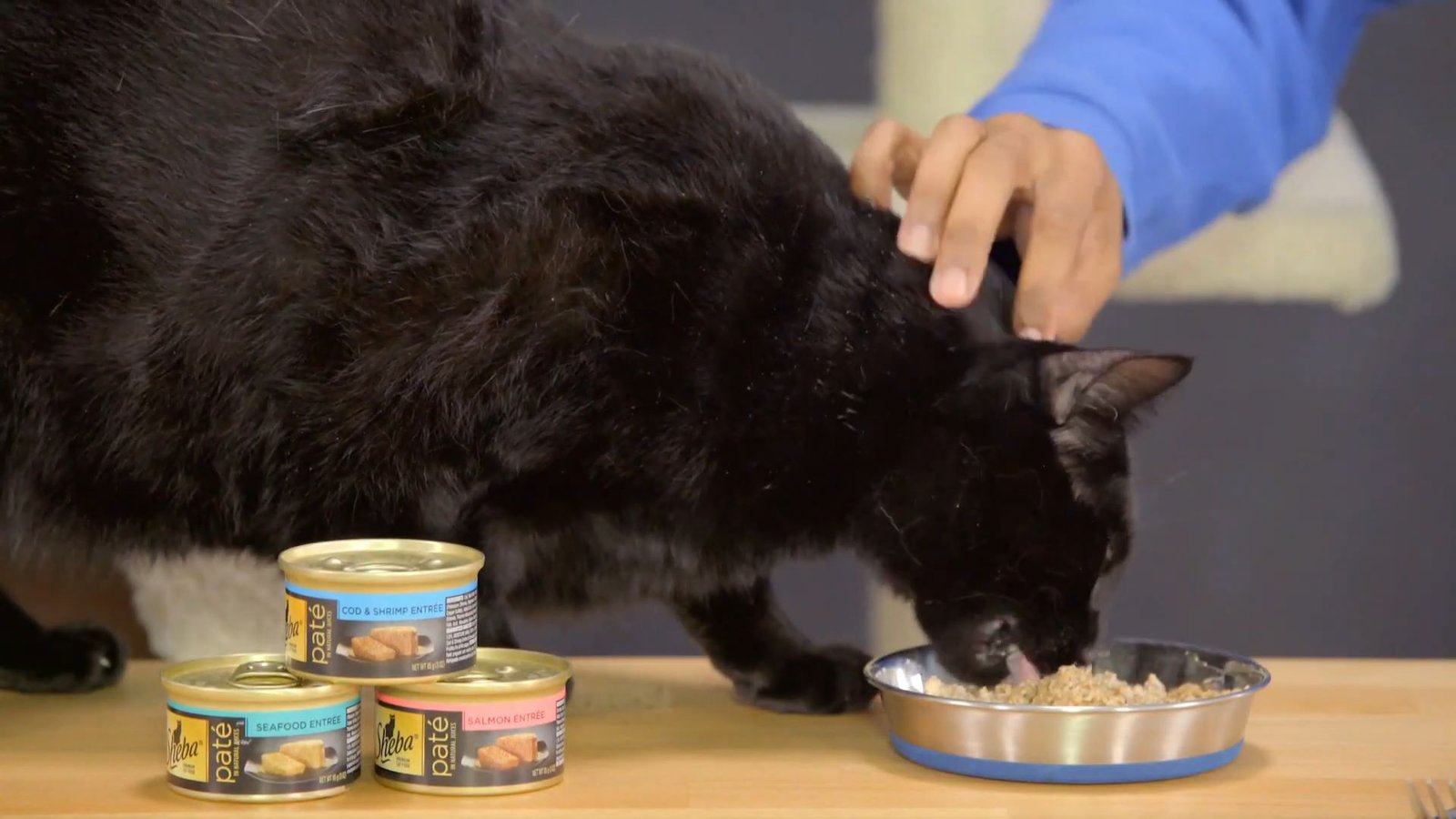
Post-surgical cats and those recovering from serious illness require intensive nutritional support to heal tissues and restore energy reserves. Recovery-specific high-calorie formulations often provide 1.5-2 calories per gram, significantly higher than standard options.
Cancer patients, whether undergoing chemotherapy or managing tumor-related appetite loss, benefit from nutrient-dense foods that maximize nutrition intake during periods of reduced consumption. These specialized diets support immune function while providing energy for healing.
Senior Cat Considerations
Cats over 10 years commonly experience muscle mass decline (sarcopenia) and decreased appetite due to diminished smell and taste sensitivity. Senior-specific high-calorie cat food addresses these age-related changes through enhanced palatability and easily digestible proteins.
Kidney disease cat food is often recommended for senior cats, since kidney disease creates unique nutritional challenges. These therapeutic diets use modified protein levels combined with increased calories to help maintain weight while reducing kidney workload. Because of their specialized formulation, they require veterinary supervision but can significantly improve quality of life.
Nutritional Analysis: What to Look for in High-Calorie Cat Food
Protein Quality and Content
Premium high-calorie cat food should contain a minimum of 45% protein from identifiable animal sources. Look for specific proteins like “deboned chicken” or “salmon meal” rather than generic terms like “meat meal” or “animal byproducts.” Many owners choose high protein dry cat food to help underweight cats build lean muscle mass while increasing calorie intake.
Biological value measures protein quality – the percentage of absorbed protein that becomes available for bodily functions. Egg protein scores 100%, while chicken and fish proteins typically score 80-90%. Plant proteins generally score below 70%, making them less efficient for weight gain purposes.
Fat Content and Essential Fatty Acids
Healthy weight gain requires 18-25% fat content in high-calorie formulations. Higher fat percentages risk digestive upset and may not be suitable for cats with pancreatitis or liver disease. The fat source matters significantly – chicken fat and salmon oil provide essential omega-3 and omega-6 fatty acids that support skin, coat, and immune function. Pet parents who prefer natural diets may consider organic cat food, which avoids artificial additives while still supporting weight gain.
Arachidonic acid, found exclusively in animal fats, is essential for cats and cannot be synthesized from plant sources. This requirement makes animal-based fats crucial in high-calorie formulations.
Carbohydrate Limitations
High-calorie cat food should contain a maximum of 10% carbohydrates, preferably from digestible sources like sweet potato or rice. Cats lack sufficient amylase enzyme to efficiently process high-carbohydrate diets, making protein and fat the preferred energy sources. Options like grain free cat food and gluten-free cat food reduce carbohydrate content while focusing on digestible proteins and fats
Excessive carbohydrates can hinder weight gain by causing digestive upset and reducing appetite for nutrient-dense components. Focus on formulations where carbohydrates serve functional purposes like binding agents rather than primary energy sources.
Feeding Strategies and Implementation
Portion Calculation and Meal Frequency
Calculate daily caloric needs based on target weight rather than current weight. For example, an 8-pound cat targeting 11 pounds requires portions calculated for an 11-pound cat (approximately 330-385 calories daily).
Divide total daily calories across 4-5 small meals rather than 1-2 large servings. This approach maximizes digestive efficiency while preventing meal refusal due to overwhelming portion sizes. Small, frequent meals also help maintain stable blood sugar levels.
| Current Weight | Target Weight | Daily Calories Needed | Meals Per Day | Calories Per Meal |
| 6 lbs | 8 lbs | 240-280 | 4 | 60-70 |
| 8 lbs | 10 lbs | 300-350 | 4 | 75-88 |
| 10 lbs | 12 lbs | 360-420 | 5 | 72-84 |
| 12 lbs | 14 lbs | 420-490 | 5 | 84-98 |
Appetite Stimulation Techniques
Warming high-calorie cat food to 100-102°F releases aromatic compounds that trigger appetite responses. Use microwave heating in 10-second intervals, stirring between heating to ensure even temperature distribution.
Food puzzles and interactive feeders can rekindle interest in eating by engaging natural hunting instincts. Start with simple puzzles that dispense food easily, gradually increasing complexity as appetite improves.
Environmental factors significantly impact appetite. Feed in quiet locations away from household traffic, use elevated bowls to reduce neck strain, and maintain consistent feeding schedules to establish routine expectations.
Transition Protocols
Sudden dietary changes often trigger digestive upset, counteracting weight gain efforts. Implement gradual transitions over 7-10 days, mixing increasing proportions of high-calorie food with the current diet.
Monitor for signs of digestive stress, including loose stools, vomiting, or decreased appetite during transition periods. If problems occur, slow the transition process or consider alternative formulations.
Product Categories and Selection Criteria
Prescription Recovery Diets
Veterinary prescription diets like Hill’s a/d and Royal Canine Recovery provide maximum caloric density (150-200 calories per serving) with easily digestible ingredients. These formulations require veterinary authorization but offer the most intensive nutritional support available.
Recovery diets often feature liquid or pâté textures suitable for syringe feeding if necessary. The enhanced palatability helps encourage consumption in cats with compromised appetites.
Senior-Specific Formulations
Senior high-calorie cat food balances increased calories with age-appropriate modifications like reduced phosphorus for kidney health and enhanced antioxidants for immune support. These formulations typically provide 15-20% more calories than standard senior diets.
Texture modifications in senior formulations accommodate dental issues common in older cats. Smaller kibble sizes and softer textures reduce chewing difficulty while maintaining nutritional density.
Life Stage Considerations
Kitten formulations naturally provide high caloric density (450-550 calories per cup), suitable for underweight adult cats under veterinary guidance. The enhanced protein and fat content supports muscle development while providing concentrated energy.
However, kitten food contains higher calcium and phosphorus levels that may not be appropriate for senior cats with kidney concerns. Consult veterinary guidance before using kitten formulations for adult weight gain.
Advanced Feeding Techniques
Supplemental Support Options
Under veterinary supervision, appetite stimulants like mirtazapine can jump-start eating patterns in cats with medical-related appetite loss. These medications typically show effects within 24-48 hours and can establish positive feeding routines.
Nutritional supplements, including omega-3 fatty acids and probiotics, can enhance high-calorie cat food. Fish oil provides additional calories while supporting coat health, and probiotics improve digestive efficiency for better nutrient absorption.
Multi-Cat Household Management
When only one cat requires high-calorie feeding, separate feeding areas prevent food competition and ensure appropriate consumption. Use baby gates or feeding stations to create individual dining spaces.
Timed feeders can help manage multiple cats with different dietary needs. Program feeders to dispense appropriate portions at scheduled intervals, reducing competition stress and ensuring each cat receives proper nutrition.
Common Challenges and Solutions
| Challenge | Root Cause | Solution Strategy |
| Food refusal after 2-3 days | Taste fatigue or texture aversion | Rotate between 2-3 approved flavors weekly |
| Digestive upset during transition | Too rapid dietary change | Extend the transition period to 14 days |
| Weight gain plateaus after 4 weeks | Metabolic adaptation | Increase calories by 10% or add supplements |
| Preference for treats over meals | Palatability competition | Limit treats to 10% of daily calories |
| Vomiting after meals | Eating too quickly | Use puzzle feeders or divide portions further |
Monitoring Progress and Adjustments
Weekly weight measurements provide the most reliable progress indicators. Healthy weight gain should occur at 1-2 ounces weekly for average-sized cats. Faster gains might indicate fluid retention, while slower progress suggests caloric adjustment needs.
Document qualitative changes including energy levels, coat condition, and social interaction patterns. These improvements often precede measurable weight changes and indicate overall health enhancement.
Photography from consistent angles helps track body condition changes that scales might not detect immediately. Focus on profile views that show ribcage coverage and abdominal tuck development.
Safety Considerations and Contraindications
When High-Calorie Feeding Isn’t Appropriate
Diabetic cats require specialized high-calorie formulations that control carbohydrate content while providing concentrated nutrition. Standard high-calorie foods may contain inappropriate carbohydrate levels that destabilize blood sugar.
Cats with pancreatitis cannot tolerate high-fat formulations and require modified approaches that balance caloric density with fat restrictions. These cases need veterinary-prescribed therapeutic diets.
Kidney disease patients require careful protein and phosphorus management that may conflict with standard high-calorie approaches. Therapeutic diets designed for renal support can provide increased calories while managing disease progression.
Recognizing Complications
Rapid weight gain exceeding 3 ounces weekly may indicate fluid retention or excessive caloric intake rather than healthy tissue development. Monitor for accompanying symptoms like lethargy, difficulty breathing, or abdominal distension.
Persistent vomiting or diarrheic during high-calorie feeding requires immediate veterinary attention. These symptoms may indicate food intolerance, underlying medical conditions, or feeding errors that need professional correction.
Long-Term Management and Maintenance
Transition to Maintenance Nutrition
Once the target weight is achieved, a gradual transition to maintenance-level nutrition prevents excessive weight gain while supporting achieved results. This process typically takes 2-3 weeks of gradual portion reduction.
Some cats may require long-term high-calorie cat food maintenance, particularly seniors with ongoing appetite challenges or cats with chronic conditions affecting metabolism. Regular veterinary monitoring ensures appropriate nutritional management.
Preventing Weight Regain Issues
Environmental enrichment, including interactive toys and climbing structures, encourages physical activity that supports healthy weight maintenance. Mental stimulation through puzzle feeders continues to engage natural feeding behaviors.
Regular body condition assessments every 2-4 weeks help detect weight changes before they become significant. Early intervention prevents the need for intensive weight gain protocols.
Frequently Asked Questions
What is the highest calorie cat food available?
A: Natural Balance Limited Ingredient Diets Salmon & Green Pea formula provides up to 195 calories per 5.5-ounce can, making it among the most calorie-dense commercial options available.
Is high-calorie cat food safe for healthy cats?
A: High-calorie formulations are specifically designed for underweight cats or those with increased energy needs. Feeding these products to healthy-weight cats can lead to obesity. Always consult your veterinarian before dietary changes.
How quickly should I expect weight gain results?
A: Healthy weight gain occurs gradually at 1-2 pounds per month for average-sized cats. Rapid weight gain can strain organs and create additional health complications.
Can I make homemade high-calorie cat food?
A: While possible, homemade diets require careful formulation to ensure nutritional completeness. Commercial high-calorie foods undergo extensive testing and nutritional balancing that’s difficult to replicate at home safely.
Should senior cats eat high-calorie food?
A: Senior cats often benefit from increased caloric density due to decreased appetite and reduced digestive efficiency. However, individual health conditions may contraindicate high-fat diets, making veterinary consultation essential.
My cat is underweight but won’t eat high-calorie food. What should I do?
A: Try gradual transitions, food warming, texture variations, and appetite stimulants. If problems persist beyond one week, consult your veterinarian about potential underlying issues or alternative feeding strategies.
How do I give more calories to my cat without changing foods?
A: Add high-calorie supplements like Nutri-Cal paste, mix in bone broth, offer freeze-dried treat toppers, or increase feeding frequency while maintaining current food preferences.
Conclusion
Successfully managing underweight cats through high-calorie cat food requires understanding individual needs, medical considerations, and proper implementation strategies. The science behind calorie-dense nutrition demonstrates clear benefits for cats struggling with weight maintenance, whether due to medical conditions, age-related changes, or recovery needs.
The key to success lies in veterinary partnership, appropriate product selection, and consistent monitoring throughout the feeding program. With proper guidance and dedication, most underweight cats achieve a healthy weight within 8-12 weeks while improving overall vitality and quality of life.
Remember that weight gain represents just one component of overall health improvement. Focus on the complete picture, including energy levels, coat quality, and behavioral changes that indicate your cat’s return to optimal health. Your commitment to proper nutrition can make a transformative difference in your feline companion’s well-being.

